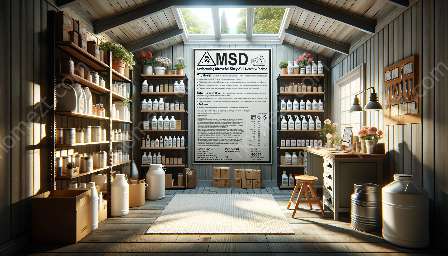Hazardous Materials: Understanding Storage Symbols and Warning Signs
In a world where hazardous materials play a critical role in various industries and household activities, it is crucial to understand the importance of proper storage symbols and warning signs. Whether it's in a factory, laboratory, or even at home, being knowledgeable about the correct storage methods and warning signs can significantly improve safety and security. This comprehensive guide will delve into the essential information about hazardous materials storage symbols and warning signs, alongside tips for safe storage of hazardous materials at home.
Understanding Hazardous Materials Storage Symbols
Hazardous materials storage symbols are visual representations that communicate specific dangers associated with the materials contained within a storage area. These symbols are standardized and universally recognized, serving to alert individuals to the potential hazards present in a particular environment.
The Occupational Safety and Health Administration (OSHA) in the United States and other regulatory bodies worldwide have established specific guidelines for the use of storage symbols. Understanding these symbols is an integral part of ensuring the safe handling and storage of hazardous materials.
Types of Hazardous Materials Storage Symbols
There are various types of hazardous materials storage symbols, each of which conveys different types of hazards.
- Health Hazard: This symbol represents materials that pose a health hazard, such as through inhalation, skin contact, or ingestion.
- Flame: The flame symbol indicates materials that are flammable, potentially causing fires or explosions.
- Corrosion: This symbol is used for materials that can cause corrosion or damage to skin, metals, or other materials.
- Environment: Materials that pose a threat to the environment, such as water pollution or ozone depletion, are marked with this symbol.
- Gas Cylinder: This symbol signifies the presence of gases stored under pressure, which could pose physical or health hazards.
- Exclamation Mark: Materials with this symbol may cause irritation or other non-life-threatening effects.
Interpreting Warning Signs for Hazardous Materials
Warning signs are another crucial aspect of maintaining safety and security when dealing with hazardous materials. These signs are typically posted in areas where hazardous materials are present, serving as a visible reminder of potential dangers and necessary precautions.
Warning signs provide essential information, such as prohibited actions, required protective gear, and emergency contact details. They help to minimize the risk of accidents and ensure that individuals interacting with hazardous materials are fully aware of the associated hazards.
Safe Storage of Hazardous Materials at Home
While the proper handling and storage of hazardous materials are vital in professional settings, it's equally important to apply safe practices at home. Whether it's storing household chemicals, pesticides, or other potentially hazardous substances, following appropriate guidelines can protect your family and property from harm.
When it comes to safe storage of hazardous materials at home, consider the following key tips:
- Read Labels: Always read and fully understand the labels on hazardous materials to grasp the potential risks and recommended storage conditions.
- Proper Containers: Use appropriate containers designed for the specific hazardous material. Ensure that the containers are tightly sealed and properly labeled.
- Separation: Store different types of hazardous materials separately to prevent potential reactions or cross-contamination.
- Secure Storage: Keep hazardous materials in a secure location, away from the reach of children and pets. Consider locking cabinets or storage areas for added safety.
- Emergency Preparedness: Have a clear plan for handling emergencies involving hazardous materials, including access to emergency contacts, spill kits, and proper ventilation in storage areas.
Home Safety & Security
Ensuring the safe storage of hazardous materials at home directly ties in with the broader theme of home safety and security. By following best practices for storing hazardous materials, individuals can create a safer living environment for themselves and their loved ones. Home safety and security encompass various aspects, including fire prevention, burglary protection, and overall risk reduction.
With an emphasis on understanding and implementing proper storage symbols, warning signs, and safe storage practices for hazardous materials, individuals can contribute to the overall safety and security of their homes and communities.



